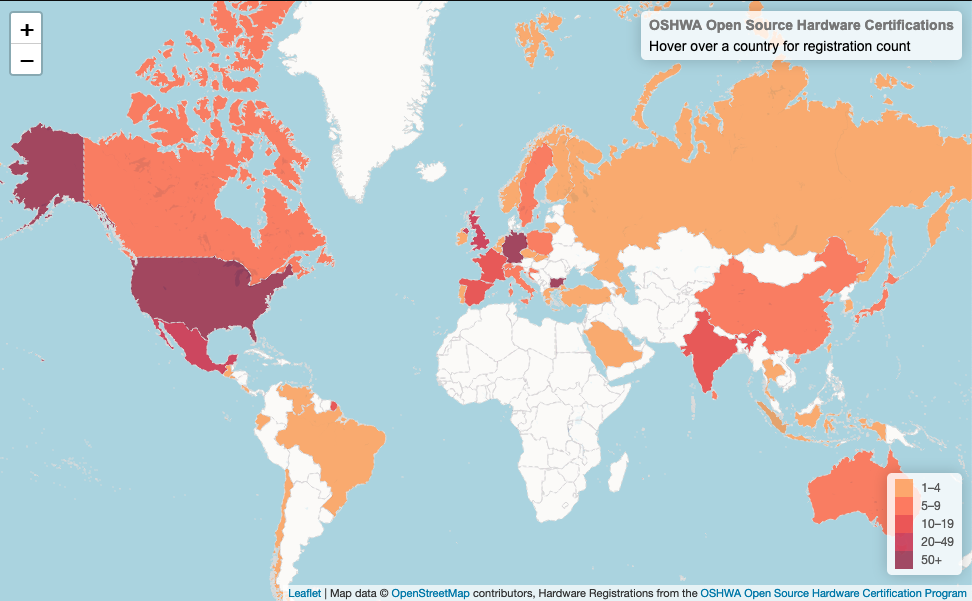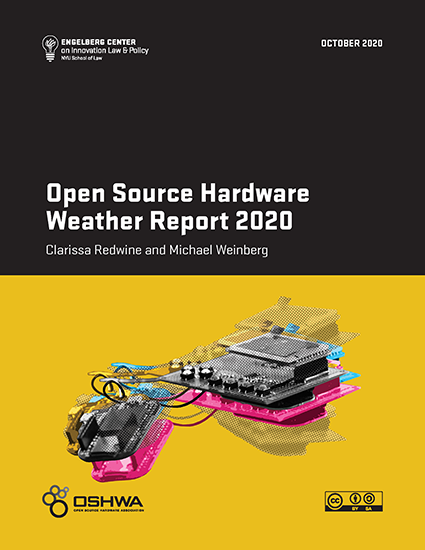Update 2/11/24: The original version of this map didn’t fully work because the OSHWA api paginates the results it provides. The original version did not take that into account, so only displayed the first 100 certifications. The newly updated version downloads all of the entries before creating the map, so it is actually complete. It also includes a count of the total entries and number of countries with certifications in the header. The new code still more or less works the same way, although there is now an initial step to loop through the api until everything is downloaded. You can find the updated version in the repo referenced below. Also, the API key expires every 100 days, so if you are reading this more than 100 days from 2/11/24 and the map is not loading, that may be the problem. There are instructions for getting your own API key in the repo.
Read More...Open Source Hardware Weather Report 2020
This post originally appeared on both the Engelberg Center and OSHWA blogs
Read More...Announcing the Open Source Hardware Certification API
This post originally appeared on the OSHWA blog
Read More...Simulating Firefly Flashes with CircuitPython and Neopixels (Now with Classes!)
This is an updated version of an earlier post. The earlier post did not use classes. Here is the link to that post in case a slightly less functional non-class version is helpful.
Read More...Keep 3D Printers Unlocked (the petitions)
Today I filed a petition to expand the scope of the current (expiring) rule about unlocking 3D printers. The full petition is here. That follows a petition I filed in July to simply renew the current rule. That renewal petition is here. The petitions are short because the substantive discussion will be reserved for the hearing phase.
Read More...



